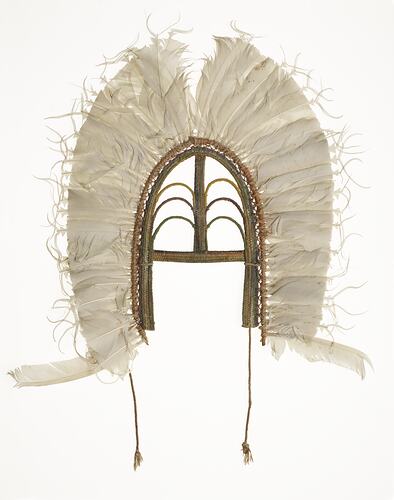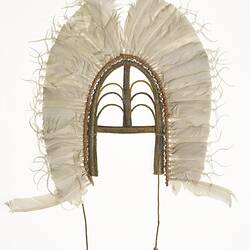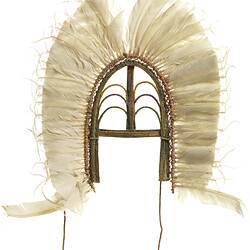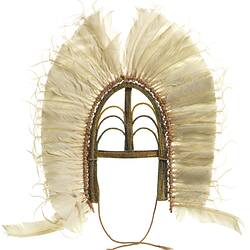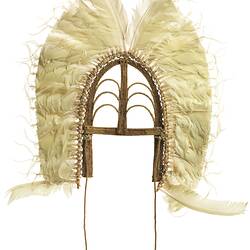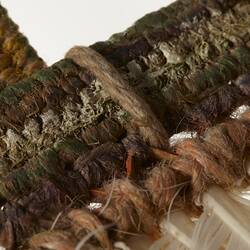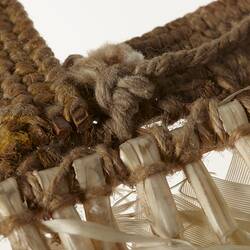Summary
This style of headdress is iconic for the Torres Strait Islands however the spelling of the name varies. Dhari is the term used by people in the eastern Islands of the Torres Straits, while those in the central islands know it as dhoeri. It is a classic form made and worn on the head for dance and typically decorated with white feathers of a sea bird. Originally it would be made with a pearl shell or turtle shell in the centre. The introduction of Christianity had a profound influence on Torres Strait culture, and the performance of ritual was actively discouraged by the London Missionary Society who arrived at Erub (Darnley Island) in 1871. When Alfred Cort Haddon went to the Torres Straits in 1888 ritual performance was not commonplace. Today the making of the dhari or doeri has re-emerged as an iconic symbol for Torres Strait Islander people and is one of the motifs on the Torres Strait Island Flag.
Local Name
Dari or Dhoeri
Physical Description
A headdress made of feathers attached to a frame of coloured fibre. The outer edges of the white feathers are trimmed. A single strand of string extends from the bottom on each side.
Significance
This Dhari headdress is an exceptionally rare piece purchased at auction in 2009. It was collected at Palm Island by a tourist on a cruise from Sydney to Cairns in 1931. The tourist took a photograph of it being worn by a Torres Strait Islander man who was no doubt part of a performance for the cruise passengers. Few objects have survived from the earliest days of what was essentially a penal settlement on Palm Island. The Dhari and the story of how it was collected provide an important opportunity to explore the histories of Aboriginal and Torres Strait Islander people removed from across Queensland to Palm Island for minor misdemeanour by a very authoritarian government regime.
More Information
-
Object/Medium
Headdress
-
Maker
-
Cultural Groups
-
Locality
-
Date Produced
-
Date Collected
-
Fully Extended
565 (Width), 430 (Height)
-
Classification
-
Date Made
-
Maker
-
Clan/Language Group
-
Place Made
-
Indigenous Region
-
Keywords
-
Type of item
-
Discipline
-
Category
-
Collecting Areas
Australian Indigenous - Northern Australia and Queensland and Torres Strait Islands
